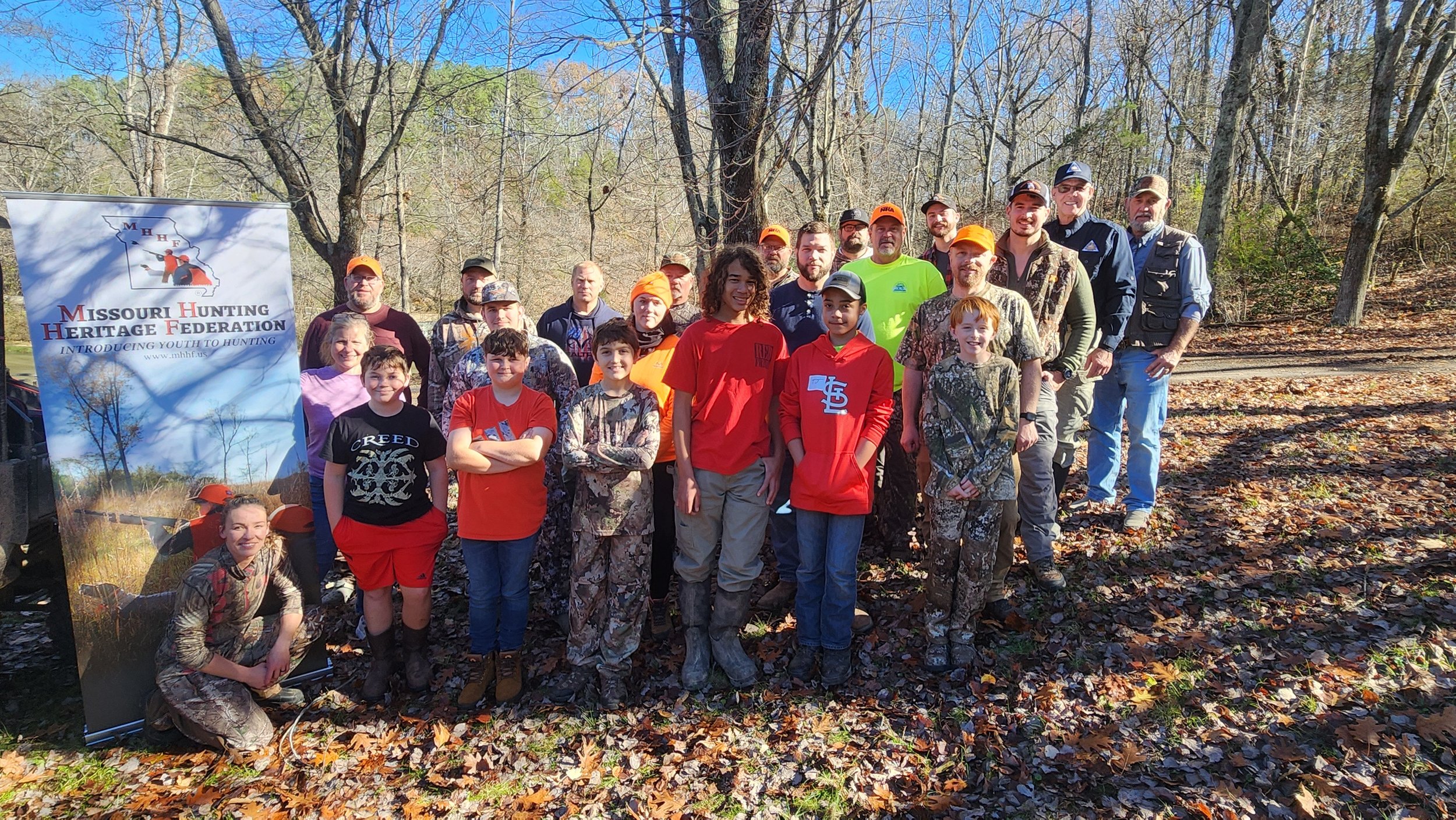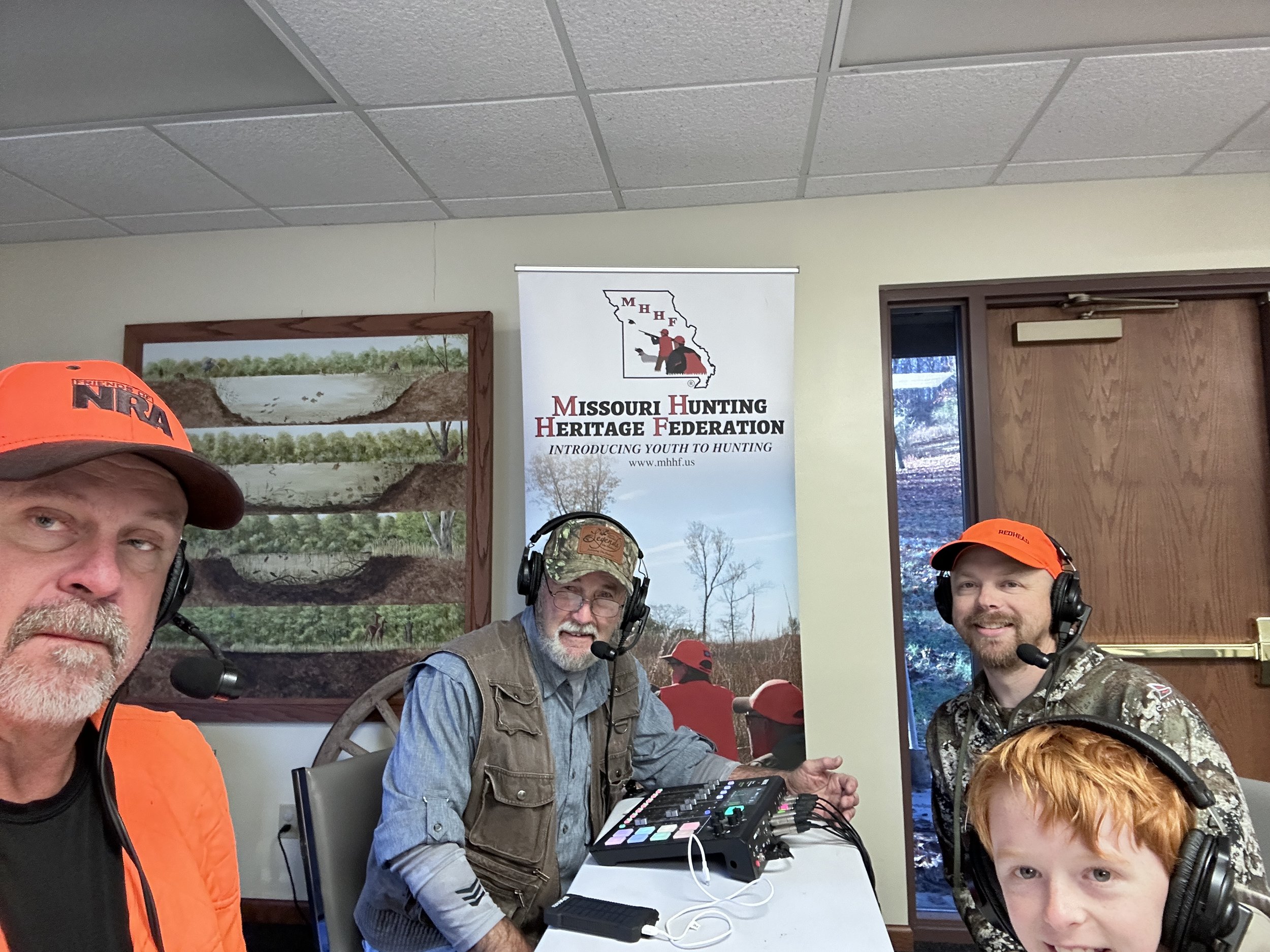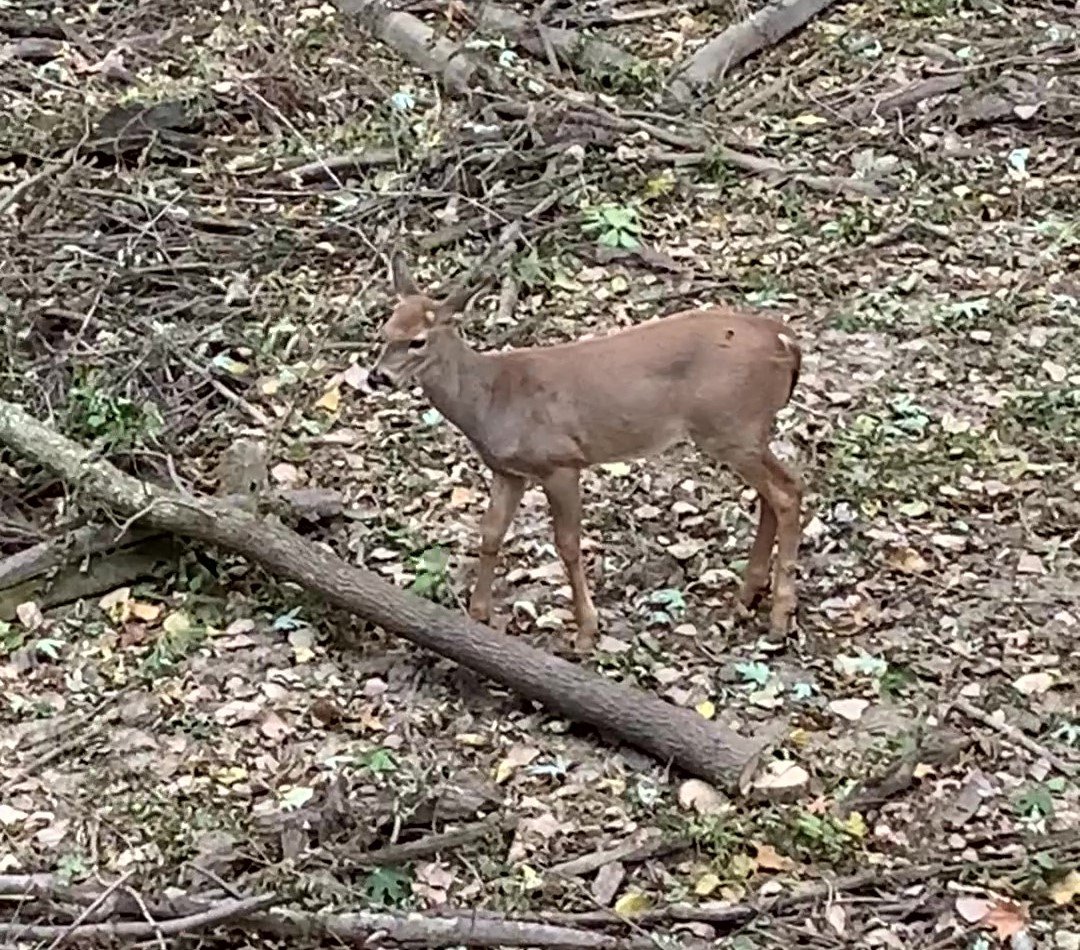By Bill Cooper
The Missouri Hunting Heritage Federation, Inc. teamed up with the James Foundation to host a youth deer hunt for the first time at Maramec Spring Park, near St. James, Missouri on November 9-10 2024.
Colton Zirkle, the Executive Director of the Missouri Hunting Heritage Federation greeted a group of volunteer mentors on Friday evening prior to the hunt at the nature center at Maramec Spring Park. “MHHF is a service-oriented organization of volunteers who are passionate about Missouri’s hunting history,” Zirkle began. “MHHF introduces youth to an outdoor way of life featuring our hunting tradition, the shooting sports, and the enjoyment of being in Missouri’s landscape.”
MHHF mentors are volunteers, who are also members of MHHF. Zirkle tries to gather mentors from the area where the hunt is being held. The Maramec Spring Park Youth Hunt included mentors from all walks of life, and included Rachel Ratcliff, of the James Foundation, Doug Shockley, Shane Staples, and Steve Zeiss of Cuba, Dwight Warnke, a Conservation Educator from MDC, Nick Girondo, a Regional Supervisor with MDC, and Dusty Snelson, a competition archer, from St. James. Bill Cooper served as photographer, videographer, and an alternate mentor.
Wes Swee, the Director of the James Foundation, spoke to the mentors. “We’ve had a changing of the guard, so to speak, at the New York Community Trust in New York City,” Swee said. “Never has there been a hunt on park grounds, but when I discussed the need for deer population control, they approved.”
Zirkle further explained the purpose of the MHHF. “Through education and hands-on training, youth learn how to safely handle firearms, gain an understanding of wildlife conservation and are introduced to many enjoyable aspects of Missouri’s hunting heritage,” he explained. MHHF Board Member Steve Rulo gave a history the Federation and hunt requirements.
Mentors are experienced outdoorsmen and have passed a hunter education course. Zirkle explained to the mentors that they would be in charge of the hunt once they headed to the hunting blinds. Their responsibilities included carrying the crossbow for their mentee, getting them and their parent or guardian into the blind safely, loading a bolt into the crossbow, and making sure that the youth hunter practiced safe hunting habits.
The mentors gathered at the end of the meeting for a snack and a time to get acquainted. Excited chatter rattled the room as the excitement for the event built.
All youth hunters and one parent gathered at the nature center on Saturday morning for a hunter safety class led by Colton Zirkle and Dwight Warnke. They covered numerous topics including firearms safety, types of firearms, proper ways to carry a firearm, shot placement, game identification, safety equipment, and responsibilities as a hunter. Students participated in safe carry exercises as well as an exercise on how to properly cross a fence with a firearm.
Seven students, all first time deer hunters, participated in the classes and hunt, including Campbell Siegel, Harrison Gardner, Peyton Bullock, TJ Clark, Sam Kelley, Zack Rothermel, and Austin McCormack. Each student was accompanied by a parent or guardian.
All participants, instructors, and mentors gathered on Saturday afternoon for instructions about crossbow safety, hunting safety, and blind safety. Every student had the opportunity to fire a crossbow under direct supervision. After a few adjustments, every student shot well, and the anticipation level for the upcoming crossbow hunt increased once again.
As the afternoon waned, students and mentors traveled to their hunting destination to scope out their blind location, approaches, and the landscape around them.
At 5:30m a.m. on Sunday morning, everyone gathered at the nature center parking lot for last minute instructions, and student-mentor match-ups. Excitement filled the cool morning air, and everyone chattered endlessly. Adults told of past deer hunting trips, while students continued to ask questions nervously.
Listening to all of the excited discussions and a bit of braggadocio inspired my hopes for the hunt and the future of hunting and shooting sports in general. Over 80 percent of Americans still approve of hunting, but only about 5 percent actually hunt. MHHF is working hard to bring new people into the sport.
Zirkle quickly passed out crossbows and equipment and matched each student/parent team with a mentor. A crescendo of excitement welled up as everyone bade good-byes and extended good luck wishes. I stood in the parking lot filming as the hunting crews disappeared into the darkness heading towards their blinds and a morning that none of them will ever forget. I could only imagine the excitement the youngsters were experiencing and the hopes for success that ran through their minds.
It didn’t take long for us to get word of the first success. Zack Rothermel, of Washington, took a doe early in the hunt. Mentor Steve Zeiss said, “Zack remained as cool as any adult hunter I’ve ever seen. The yearling approached the blind with a big doe behind it. Zack quickly got his crossbow into position and I instructed him to shoot when he settled the crosshairs on the animal. He made a perfect shot and the doe didn’t go far. Then the celebrating began.”
Zack’s father does not hunt. He expressed his appreciation for the MHHF event. “Zack become interested in hunting through YouTube videos. I didn’t know where to start. This event proved to be very valuable to both of us. It was great to be able to go through the classes with him too, we will never forget hunting with Steve Zeiss, our mentor, and Zack taking his first deer.”
Everyone gathered again after the hunt. Many stories were told about close calls, but Zack took the only deer of the hunt. Cheyne Matzenbacher, of the National Deer Association, demonstrated how to skin and butcher the deer for the entire group.
For further information about the Missouri Hunting Heritage Federation, contact Colton Zirkle at 573-200-1889, or www.mhhf.us. Follow them on social media at @mohuntingfed.
About the Author: Bill Cooper is a member of MHHF as well as the Missouri Outdoor Communicators and many other conservation related organizations. In 2024 Mr. Cooper was inducted into the Legends of the Outdoors National Hall of Fame and in 2018 was inducted into the Freshwater Fishing Hall of Fame. He has a passion for connecting folks to the outdoors and has made a career of writing articles for local newspapers and magazines like Outdoor Life and the Conservation Federation of Missouri. Mr. Cooper is the host of the Living the Dream Outdoors Podcast and recorded Episode 193 at this event titled, “Missouri Hunting Heritage Federation - Maramec Spring Park Youth Deer Hunt,” which can be found anywhere you listen to podcasts.
Bill Cooper (center left) recorded a podcast with MHHF Mentor Steve Zeiss (left) and clinic participants John (upper right) and Zach Rothermel (lower right).











